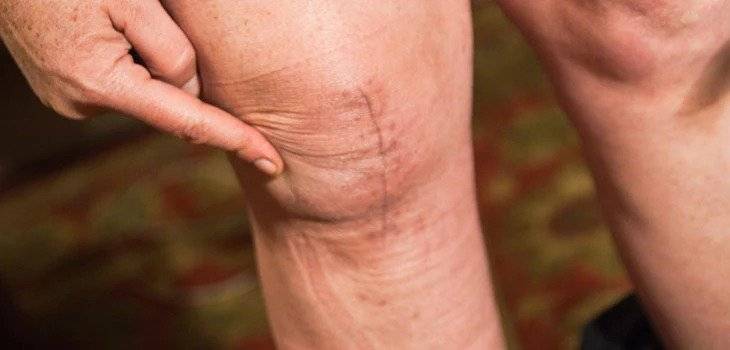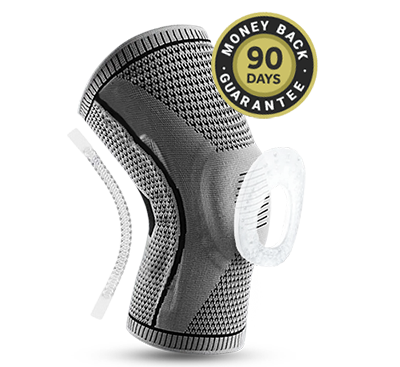Unusual Pain-Relieving Home Remedies You’ve Never Heard About

Pain management is top-priority for any person dealing with chronic pain.
While medication is an option, people also try unusual pain-relieving home remedies.
But, do the unusual pain-relieving home remedies work?
Is there any scientific evidence that backs the remedies?
We'll dig into that today, which includes topics like:
- A study that shows this unusual (but natural) orange powder works better than one of the top anti-inflammatory drugs
- So WD40 works well for door-hinges... Does it also work for your knees?
- Find out why many folks swear on rubbing "chili lotion" on their knees, back and other sore joints
Here are five unusual pain-relieving home remedies that you’ve never heard about.
Unusual Home Remedy #1: WD 40 - Should You Use It?
There are many reasons why you may be feeling pain. You can be sick, have undergone surgery, or have been in an accident resulting in injury. In all these scenarios, you have to deal with some pain level.
While it’s possible to use medicine for pain relief, people also try alternative remedies like WD 40.
In construction, WD 40 is an excellent lubricant for door joints.
But, patients who have arthritis causing chronic pain are opting to use it. They believe that WD 40 can also lubricate their joints and offer relief from pain.
The belief is that the cooling effect of the lubricant acts as a form of cold therapy. Because of the low temperature, there’s less inflammation because of blood flow reduction. That way, you can move about better and not be too stiff.
However, it’s not advisable to use WD 40 for pain relief. Not only does the lubricant not work, but it can also even be harmful to your health and well-being.
The spray can cause dry skin and contains lots of toxic chemicals.
It’s a myth that WD 40 is good for pain relief. The manufacturer is adamant that no one should use the lubricant for any medical purpose.
It contains petroleum distillates, and every user must handle it with caution.[1]
Unusual Home Remedy #2: Honey and Cider Vinegar
People use unusual home remedies for pain relief, like honey and apple cider vinegar (ACV).
ACV is a household name available in millions of homes. Many people enjoy it in many ways and prefer its anti-inflammatory benefits.
It’s also an excellent ingredient for cooking and household cleaning solutions.
As an unusual home remedy, people use ACV for its anti-inflammatory properties.
Arthritis patients, for example, suffer from inflammation, stiffness, and soreness.
The belief is drinking a mixture of honey and ACV will reduce inflammation. Adding honey makes ACV more palatable as it’s quite acidic.
While there’s scientific evidence on the benefits of ACV for colds and sore throats, none exists for pain relief.[2]
However, some anecdotal evidence shows that people have experienced relief after using honey and ACV.
Before trying it, make sure to take the mixture after consulting with your health practitioner.
Does It Really Work?
Does compression therapy work to reduce knee pain? Well, according to Mivanovich, when he started using compression socks. "I don't understand the science behind them, but they really work for me. I wear compression socks on long runs at the gym (anything over 5 miles) as well as at work for recovery." [4]
Fritohikes says, "My sports medicine doctor prescribed some silicone knee braces. She said my only other option was a knee replacement. These braces are fantastic. Use for hiking, skiing, and golf. Still some knee pain after 20 miles a day, but nothing compared to before." [5]
3 Easy Ways to Try Cold Therapy at Home
1. Sock Compression Brace
By far, this is the most affordable and easy-to-make knee brace option. The result will be a knee sleeve that you can wear to reduce knee pain.
It works thanks to the elastic nature of the sock that will apply pressure on the knee joint.
- A pair of scissors
- A marker pen
- A pair of knee-high socks
- Fetch the scissors and cut the toes off the knee-high socks.
- Put on the socks and pull them up past your knees. Ensure the heel part rests on your knees to apply gentle pressure.
- While it's good to leave the heel on the socks, you can cut it off. This leaves you with an open knee sleeve to apply pressure on the painful knee joints. Also, go for a pair of socks that are a little tighter to apply pressure.
- Fetch the athletic tape and stretch out a length that's enough to cover the circumference of your knee.
- Use one hand to grab the top of the tape and the other to twist it over and over. You will start to create a tight rope of sorts.
- Place the rope on the horizontal line of your knee cap and start looping it around your knees. You'll start to feel slight compression with each loop, but ensure it's not painful.
- Complete the wrap, cut the tape and stick the end on your knee area.
No Time To Make Your Own DIY Compression Tool?

KNEER15
RESOURCES
- https://pubmed.ncbi.nlm.nih.gov/1554073/
- https://pubmed.ncbi.nlm.nih.gov/22453307/
- https://pubmed.ncbi.nlm.nih.gov/33339752/
- https://www.reddit.com/r/AdvancedRunning/comments/ejjr91/what_are_your_thoughts_on_compression_socks/
- https://www.reddit.com/r/Ultralight/comments/n9itbw/does_anyone_wear_knee_braces/


 +1 302-405-5713
+1 302-405-5713
